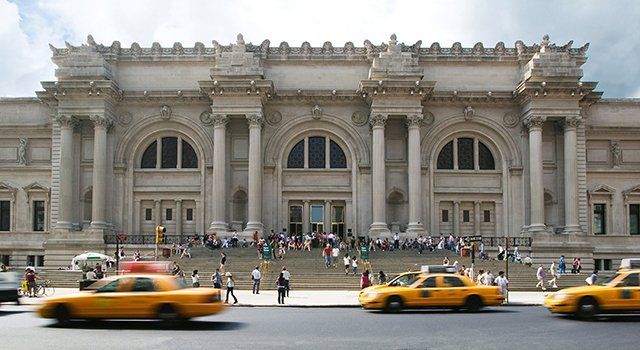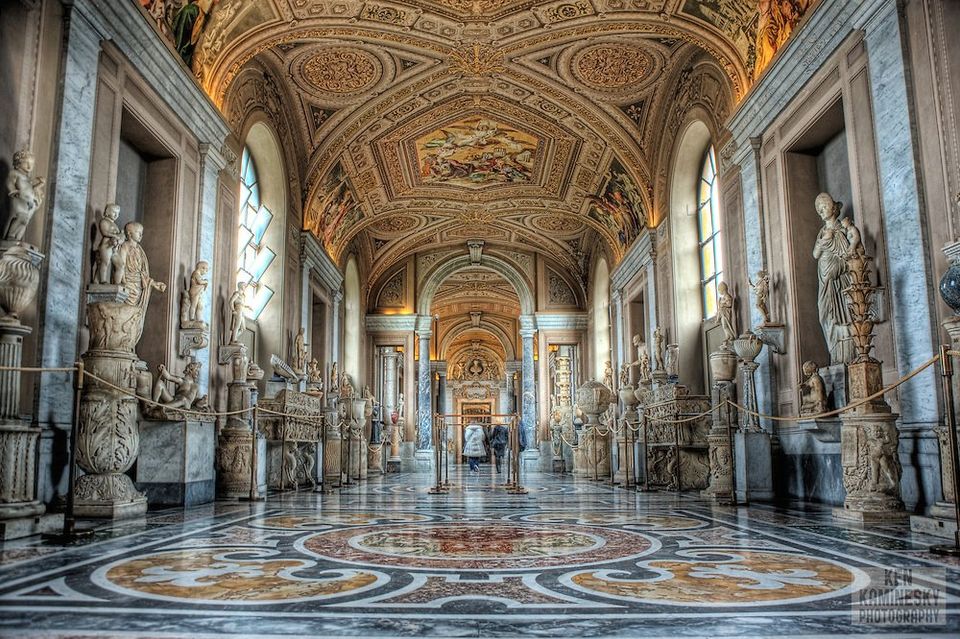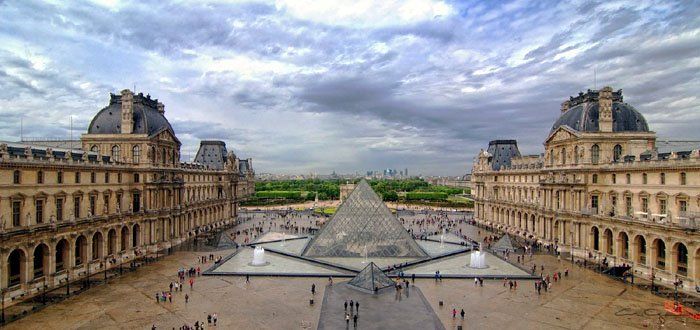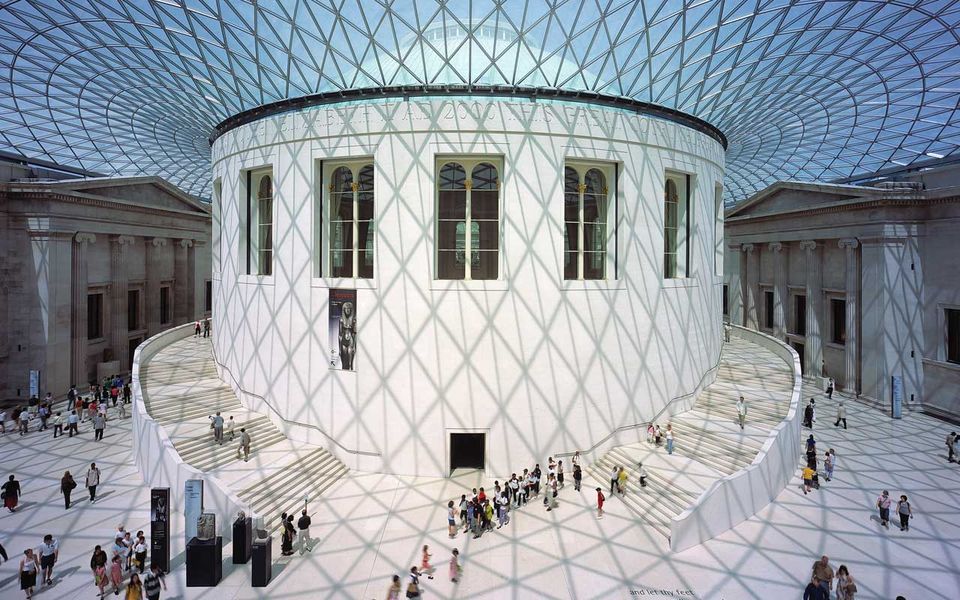The best art museums in the world
Website Editor • February 26, 2020
From the British museum in London to the Museum of Modern art in New York, here is our top picks for the world’s best art museums.
There are a number of amazing museums out there, but the best art museums in the world have become destinations in themselves. Being home to some of the world’s most popular artefacts, sculptures, and paintings, these museums are a treasure of knowledge, allowing visitors to navigate the culture and history through creative expression. These museums show very different exhibits, but they have one thing common: they all definitely worth your visit.
Metropolitan Museum of Art, New York
Also known as The Met, the Metropolitan Museum of Art, New York
is the largest museum in the Western hemisphere. The museum is home to more than 2 million pieces of artwork and displays enough variety to attract millions of enthusiasts each year from around the globe. Its collection spans Africa, Asia, Europe, America as well as the Islamic, classical and ancient worlds. The work includes antiquities, musical instruments, interior design, glass, sculpture, photography, painting, statuary, armor and the entire first century Egyptian temple of Dander.

Vatican Museums, Vatican City, Rome, Italy
Located within the city boundaries, the Roman Catholic Church’s Vatican collection
is most stunning and one of the largest collections in the world. It was founded in the early 16th century and contains masterpieces of sculpture, painting and other work of art collected by the popes through the centuries. The museum includes different monumental works of art such as the Borgia Apartment, the Raphael Rooms and Loggia, the Chapel of Beato Angelico and the Sistine Chapel.
Le Louvre, Paris, France
The Louvre
is one of the most famous art museums in the world and a must visit destination for a person with an interest in art. It was originally a fortified palace that was home to the kings of France before becoming a museum two centuries ago. The museum has a collection of over one million works of art, from which 35,000 are on display. Some of the most famous artworks in the museum are Leonardo da Vinci's Mona Lisa, the Dying Slave by Michelangelo, the Nike of Samothrake and, of course, the Venus of Milo. Come for the best known works but stay for the splendour of the lesser known works. You can easily get lost for a whole day.
The British Museum, London, England
The British Museum, of London
is the largest museum in Britain. The museum is dedicated to human culture, art and history and it is located in the Bloomsbury area of London. It holds more than 8 million objects from different era, ranging from exquisite gold jewels to whole Assyrian palace rooms, Athens Parthenon to prehistoric bones.
El Prado Museum, Madrid, Spain
The Prado Museum
also known as (Museo Nacional del Prado) is the main Spanish national art museum, located in central Madrid. The museum contains the most impressive and largest art collections in the world from the 12th century to the early 10th century based on the Spanish art and royal collection. The most notable artwork of the Prado Museum display is El Greco, Murillo, Velasquez and Goya. The collection comprises around 8,200 drawings, 4,800 prints, 1000 sculptures and 7,600 paintings. El Prado is also situated next El Parque de Retiro, an enormous, beautiful park owned by the Spanish monarchy until the 19th century. A highlight is taking out a rowboat on the little lake in front of the Monument to Alfonso XII, or visiting the Crystal Palace within the park.
Articles

The United Nations has described the disruption to education caused by the pandemic as ‘unparalleled’. At the virus’ worldwide peak in April, it is estimated that over 90% of all enrolled learners, from kindergarten to bachelors and beyond, had their education affected by school closures and the pandemic (UNESCO). For many university students and older children, they have had to adapt quickly to online learning. They can keep in touch with their peers and teachers online and continue their studies, albeit in a highly modified way. As challenging as this may be, this experience will help equip them for a future that is increasingly online. For parents of younger children, they are assuming a new role: their child’s home school teacher. This is in addition to their usual childcare and household duties, their work responsibilities and often emotional and financial worries caused by the pandemic. Stressful? Yes. The good, and somewhat surprising, news? The experts advise that you don’t teach your children - at least not in the way you might expect.

If the recent outbreak of Covid-19 has taught us anything, it's that many adults do not wash their hands effectively. It has never been more important that we support our children to develop good personal hygiene to keep themselves and our families safe. This seemingly easy task can be very difficult for children with fine motor skill difficulties. In this article, we explore some ideas to support your child with hand washing.

Lockdown has brought the digital future into the now. Online shopping, entertainment, education and more have moved from the periphery to the mainstream to, in many cases, the only option. With the necessity of social distancing looking to continue for many months, it appears that this rapid digital revolution is here to stay. This means that life as we know it, in most of its sectors, has changed forever. In order to survive, businesses are having to adapt rapidly, embrace technology and look to the future. Architecture is no exception. There has been a widespread adoption of technology and VR over the past few months in response to the lockdown across all of society. Elderly grandparents who were once resistant to adopt new technologies talk of “Zooming” and have started video chatting with their family members to combat loneliness. Art galleries that were once considered stuffy or pretentious are now pioneers in VR technology, with Google Art & Culture offering tours of London’s National Gallery or the Musee D’Orsay in Paris. These virtual tours deliver art in a dynamic new way that can be far more engaging than regular photos. Critics have applauded the panoramic and immersive views of gallery building and exhibitions which work well for rendering of 2 dimensional art, however impressions of sculpture is somewhat lacklustre. With VR technology, users can enjoy a truly immersive experience in the comforts, and safety, of their own home. The COVID-19 pandemic has served as an accelerant for the arts and entertainment industries to embrace VR.







